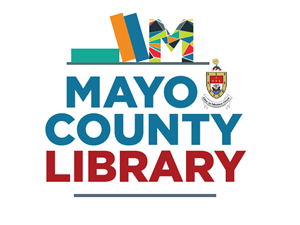Mayo Workhouses
The workhouse was an institution which operated in Ireland for a period of some 80 years, from the early 1840s to the early 1920s. There were 163 workhouses in total.
Workhouses operated on the premise that conditions had to be as harsh as possible in order to ensure it was a place of last resort for those who entered its doors. Entire families were required to enter together thus clearing the land of tenants who were unable to pay rent. Families were immediately split up with the exception of children under the age of 2 who could remain with their mothers.
Conditions in the workhouses were appalling. Hunger was rife as inmates received only 2 meals a day (3 for children) mostly consisting of potatoes, milk and stirabout (porridge). Inmates were hungry, bored, and often treated with extreme cruelty by staff, many of whom were ex-army or police.
The workhouse has been described as “the most feared and hated institution ever established in Ireland.” (John O’Connor, The Workhouses of Ireland: the fate of Ireland’s poor. Dublin, 1995, p.13)
Workhouses in Mayo
Following the Irish Poor Law Act of 1838, five poor Law unions were created in Mayo. Each of them had to maintain a workhouse where local paupers could be fed and housed. A Board of Guardians, numbering around 30 members, managed them.
The workhouses were based in Ballina, Ballinrobe, Castlebar, Swinford and Westport. During the Famine workhouses soon became overwhelmed by numbers seeking admittance and many starving people were rejected. In 1849 it was decided to build new workhouses in Belmullet, Killala, Claremorris and Newport.
The following are digitised records from several workhouses in Mayo:
Castlebar Union Workhouse Report
The Minute Book of the Castlebar Union Workhouse
The Minute Book of the Claremorris Union Workhouse
The Minute Book of the Swinford Union Workhouse
Ballinrobe Workhouse
The records of the Ballinrobe Poor Law Union have been digitised and are available below. Forty volumes of minute books are available in pdf form grouped according to category which means that the original Minute Books can be stored in appropriate conditions in the county archives and do not need to be handled by the general public.
The collection includes Board of Guardian minute books (1844-1899), financial records (1841-1931), letter books (1855-1915), workhouse infirmary records (1906-1921) and outdoor relief records (1874-1926). Click each item below to access records.
- Ballinrobe Workhouse Minute Books 1844 - 1872 .
- Ballinrobe Workhouse Minute Books 1872 (contd) - 1899.
- Ballinrobe Workhouse Financial Records .
- Ballinrobe Union Letter Books .
- Ballinrobe Union Legal Matters and Workhouse Administration documentation .
- Ballinrobe Union Outdoor Relief and Workhouse Infirmary documentation .
This collection will be of great interest to historical researchers of all kinds and will be of particular importance to local historians and genealogists. A comprehensive directory and index to the collection can be viewed here and should be consulted for more detailed information on the content of the individual pdf files. Maps of the workhouses can be viewed in the gallery below and in more detail on the Mayo Map Browser.
The archives provide a valuable account of the administration of Ballinrobe Union and its workhouse, one of nine established in Mayo in the nineteenth century. The Union administered the electoral divisions of Ballinrobe, Ballinachalla, Ballyovey, Burriscarra, Cappaghduff, Cong, Coonard, Dalgan, Hollymount, Houndswood, Kilmaine, Kilcommon, Neale, Newbrook, Owenbrin, Partry, Portroyal, Roslee and Shrule
The Archives reveal how the workhouse pauper inmates were treated and regarded by administrators and contemporary society. They also provide an important account of social and economic conditions in the Ballinrobe Union District during the second half of the nineteenth century, including the period of the Great Famine (1845-1850) and the first quarter of the twentieth century.
SOME SOURCES
http://irishworkhousecentre.ie/
http://www.workhouses.org.uk/Ballinrobe/
Atlas of the Great Irish famine by John Crowley et al, CUP, 2012
The Workhouses of Ireland by John O’Connor, Anvil books, 1995
The workhouses of County Mayo by Steve Dolan, Irish Workhouse Centre, 2018

